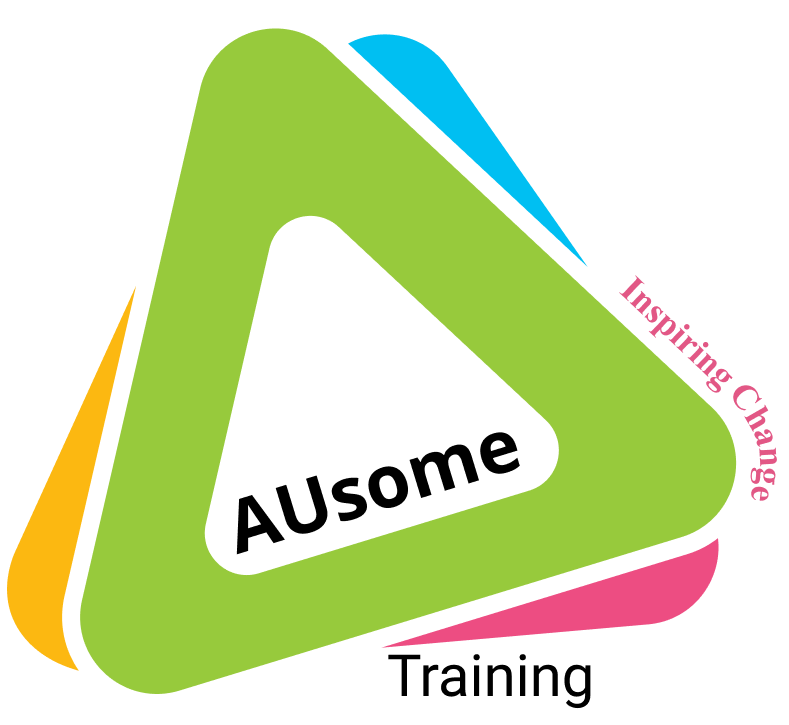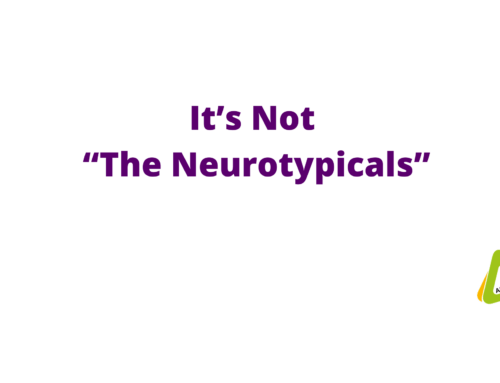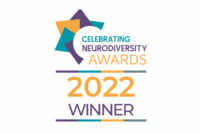Our latest blog by MAQQI
Well, it’s April so that means… spring weather? Nope. Unfortunately it means an awful lot of non-Autistic people being incredibly rude towards Autistic people on social media. This is the reality of ‘awareness’ and why many Autistic people just do not engage. We call it ‘Bewareness’ for a reason.

This is why you see people pushing back by instead talking about ‘acceptance’ but that shift in approach is not a new thing. In fact, it is of the same vintage as the ‘awareness’ stuff. It’s been a long, long battle. So, a very quick history lesson.
In 2007 the UN established ‘Autism Awareness Day’ with General Assembly resolution (A/RES/62/139), marking April 2nd as a date each year to spread awareness of the challenges presented by autism. The actual ‘event’ was initiated in 2008, so this is it’s 16th year.
But what about the ‘acceptance’ story? Considering this is generally understood as a push-back against ‘awareness, you may be surprised to find that it originated in 2006 – before not after even the proposal of an awareness day. Even with a two-year head start we’re still battling to be heard in many places. The idea was initiated by The Autism Acceptance Project, spearheaded by Estee Klar-Wolfond and survived until 2008. See if you can guess why. The idea however was picked up by Paula C. Durbin-Westby who gave us International Autism Acceptance Decade 2010-2020, and in 2011 Autism Acceptance Day on April 1st, and April as a whole as Acceptance Month.
But we were at this celebration business even before then. In 2005 a group called Aspies for Freedom established June 18th as Autistic Pride Day, which has been celebrated every year since, often with social gatherings, particularly picnics and general community joyousness.
So why is it that everyone knows about ‘autism awarenesss’ and this history while the concepts of acceptance and pride have remained largely obscured if not utterly invisible? I choose the word ‘invisible’ deliberately here because this essay is not about awareness, acceptance, pride or April. Surprise! It is about the concept of gaze or ‘le regard’ and how this shapes the entire context within which basically everything relating to Autistic people exists, from awareness to bewareness, acceptance to exclusion, even ideas like accommodation, support, diagnosis. Even pride.
The idea of ‘gaze’ has a complex history under a range of names, but today is best known in the phrase ‘the male gaze’ as defined by John Berger in ‘Ways of Seeing’ and in particular Laura Mulvey in ‘Visual Pleasure and Narrative Cinema’ during the early 1970s. Essentially this discusses how visual arts present the female body specifically with a male viewer in mind. Since then this concept has been developed and modified and we now have concepts such as ‘cis gaze’ – the way transgender bodies are portrayed and viewed by cisgender eyes for example, the white gaze, the imperial gaze, or the able gaze… and it to that last one we go next.
The idea of ‘able gaze’ (or sometimes ‘non-disabled gaze’) has been around in some form for many, many decades and the particular sub-type I’m interested in here has been discussed as a distinct named thing for more than 20 years. It has had several names such as ‘allistic gaze’ or ‘non-Autistic gaze’ but here I’d like to suggest something a little more memorable: Naughty gaze. Yep that title was foreshadowing. Essentially this is a compression of ‘non-Autistic gaze.’ Great nothing like a bit of mildly amusing word-play. But what does it mean?
Naughty gaze is the framing of Autistic personhood, Autistic bodies and movement, Autistic minds and worldviews solely through non-Autistic eyes. As with other forms of gaze, this is selective – it picks out certain characteristics for attention, skips over others, creates a pretty homogenous stereotype… and as with all forms of gaze, it passes judgement. And it motivates actions based on that judgement.
So what forms does that actually take in everyday life? A really obvious one, going back to the origins of gaze theory in the arts can be found in representations of Autistic persons on TV and in movies which, even when produced by Autistic actors, writers and directors, exist with a ‘naughty gaze’ in mind. That’s the audience. That’s who we’re talking to, even when what we’re saying is authentic. Mostly, though, it’s shows like The Good Doctor that veer closer to freak-show-with-a-plot, or The A Word where the Autistic presence is little more than a plot device or prop.
It’s easy to see a ‘naughty gaze’ in examples like these, and there’s heaps written online you can access discussing this. It goes deeper, though. Let’s go right back to the beginning of this post. What is ‘awareness’? What’s it for? WHO is it for? Give it a little thought and you can see how thoroughly that idea has been framed by that naughty gaze – non-Autistic people conscious that other non-Autistic people are not that aware of the views on ‘autism’ non-Autistic people ‘should’ have… and getting the very non-Autistic UN to set up one day in the year when they can ‘be aware of autism.’ Someone can make a speech to the UN General Assembly, some government buildings can turn on blue lights that evening, and non-Autistic charities get to raise lots of money ‘for autism.’
This scenario, where actual Autistic people play no role but as a ‘plot device,’ where non-Autistic people put themselves centre-stage as heroes or warriors ‘battling autism,’ and where the few carefully selected Autistic people put on show are there mostly as objects of pity, to scare ‘normal people’ with tragedy stereotypes, or as ‘inspo-porn’ – people who achieved things in life ‘despite their autism’ to inspire non-Autistic audiences.
All of that is commonplace, and has been dissected and analysed at length elsewhere. The crucial point here is that what lies behind a scenario like this ever existing is that naughty gaze. We are a minority with little voice and minimal access to channels of influence, so the audience is always non-Autistic people. So, what’s missing?
Community. Connection. Meaning. Respect. By, for and about Autistic people.
Estee and Paula set out to subvert that othering and, while the words people use have changed, one thing that’s become clear is that very often it is just that – words. ‘Acceptance’ is just what we call it now when we talk about ‘them’ and raise funds for researching ‘them.’ It’s still about that naughty gaze. But it has opened a door, just a little. By forcing people to use the word ‘acceptance’ their naughty gaze has had to mutate a bit. You just can’t talk about acceptance and cures or treatment together without creating a discordance in your messaging.
But it is still all about those non-Autistic eyes and non-Autistic eyes. What is the Autistic gaze looking for? How do Autistic people frame Autistic experiences and perspectives when we are addressing an Autistic gaze?
This brings us back to the idea of Autistic Pride Day on June 18th and, broadening the scope to all neurodivergent people, NeuroPride Day on August 8th.
This is us in our own space. This is community acting to please itself. This is community reaching out not to persuade others but to make connection with neurokin. This is about finding meaning in those human connections, seeking to be seen by peers and enjoying mutual respect. These occasions are about celebration of our existence, sharing experiences and interests, cheering our survival and our all-too-little wins. Above all, they are about acting out humanness – reaching for connection and sharing joy – really fundamental human urges.
Because we are human. Because humans are a social species. Because that’s what humans do.
In ancient times a punishment often regarded as greater than death was exile. De-personhood. Exclusion. Silencing. Stripping a person of all rights, all possessions, all recognition as human. That this punishment retains its potency can be seen by the use of solitary confinement, or the case of Shamima Begum. The struggle against the naughty gaze is focused not on the looker, but on the judgement that follows, and the actions which ensue. The form those actions take is most often a form of unspoken ‘internal exile’ – remaining with us but not of us. Nobody endures that easily.
This is why Autistic people mask. This is why we experience lower quality of life, poorer healthcare, and shorter lives. Because we’re humans, and humans aren’t made to survive exile.
So, my largely non-Autistic audience, whose naughty gaze this entire discussion has (ironically) been addressed to… what can you do?
The great voices of history, from Cicero to St Luke to Spiderman, suggest a direction: “to whom much is given, much will be required.” Do the work. Think. Ask. Question. Question yourself. Be humble in the presence of authentic voices. Make space for Autistic bodies. Honour our being. Ask us not just what we need but what we want. Recognise your great power, shoulder your great responsibility.
Use your voice to shift others from a nAUghty gaze onto a more Autistic gaze. Remind people ‘April for autism’ and ‘autism awareness’ is just a marketing tool to fundraise for non-Autistic charities… and let them know about Autistic Pride Day and NeuroPride.
Hey, you know what’s really amazing about April? Leaves on trees, warmer weather, primorses and hawthorn flowers, birdsong and butterflies. That’s a reminder we ALL need! Go and enjoy it – it’s wonderful.



